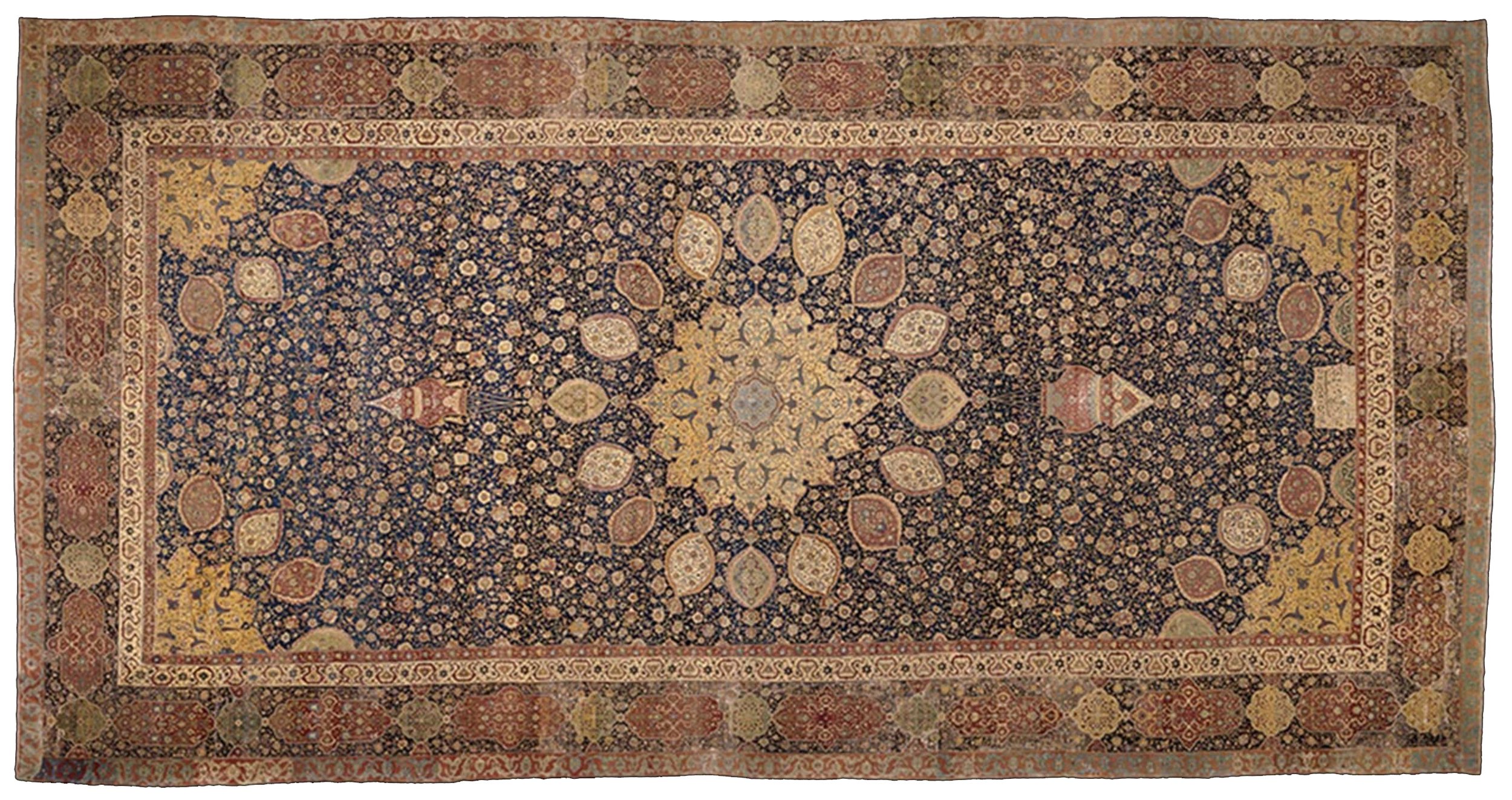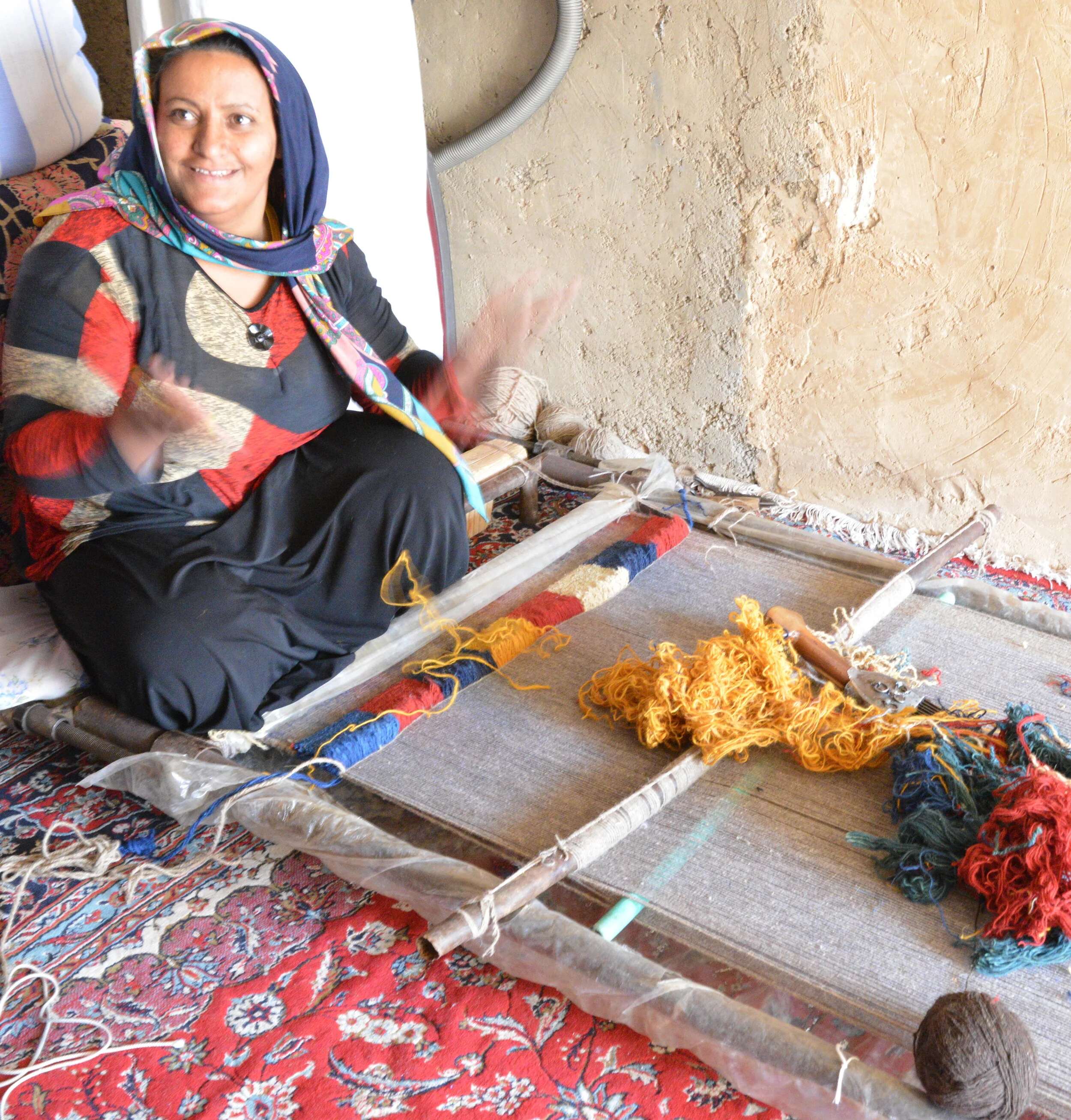Making a Classic Persian carpet, Part 2: Material
/The process of acquiring materials initiates once the design is confirmed. Typically, the production director, often responsible for commissioning the design and providing financial support for the project, makes decisions regarding materials and selects the weavers. In some cases, the designers themselves take on the role of production director and oversee the entire process.
pic.1; Some producers prefer to buy the wool directly from the nomads and supervise the process of yarn production from very beginning.
The selection of materials and their quality play a pivotal role in shaping the ultimate appearance of a carpet. Several factors influence this choice, including knot count, market appeal, cost considerations, the project's overarching goal (whether to produce a work of art or a functional rug for daily use), and economic factors. The most common materials producers choose from are wool, silk, cotton, and often a combination.
Considering the structure of a classic Persian city carpet, which consists of warp (seen as the fringes of the rug), on every pair of which a knot is tied (forming the pile), and two threads of weft (that hold the knots and warps together and are hidden from our view), it could be one of the following combinations:
Pic 2: Combination of silk and wool as pile, on cotton base (Warp) and two threads of cotton weft. this is a carpet from ardabil in which for a short period of time, in 1980s, such composition became a trend among the producers.
Pile: Wool - Warp: Cotton - Weft 1: Cotton - Weft 2:Cotton (The carpets of such composition are much more common; they are hard-wearing and firm; there are many antique pieces in this combination that are in the museums and worthy of connoisseur collectors)
Pile: Wool - Warp: Silk - Weft 1: Cotton - Weft 2:Cotton (This composition makes the rug’s back softer. Using silk as a base makes knotting finer knots easier, so generally used for more refined rugs)
Pile: Wool - Warp: Silk - Weft 1: Silk - Weft 2:Cotton (adding the silk weft has no aesthetic effect; it makes the back even softer than option 3)
Pile: Wool - Warp: Silk - Weft 1: Silk - Weft 2: Silk (Such composition is used for superfine rugs. Silk warps (base) help the weaver to achieve greater horizontal density, and at the same time the fineness of the wefts reduces the space between the rows of knots to help achieve greater vertical density)
Pile: Wool and Silk - Warp: Cotton - Weft 1: Cotton - Weft 2:Cotton (adding silk to the pile enhances the smoothness partially, and the dual texture could make a more appealing aesthetic for some. This composition is extremely rare for a classic Persian carpet as the number 3 refer to picture number # for an example)
Pile: Wool and Silk - Warp: silk - Weft 1: Cotton - Weft 2:Cotton (In such rugs silk highlights or flowers enhances the aesthetics and creates additional posibilities for designer to play with the texture)
Pile: Wool and Silk - Warp: silk - Weft 1: silk - Weft 2: Cotton (It is same as number 6 but using silk for one weft results in more supple handle for the rug)
Pile: Wool and Silk - Warp: silk - Weft 1: silk - Weft 2:Silk ( refer to number 4, using silk as highlight or flowers or field would impact aesthetics and if in large volume, it could enhance the smoothness.)
Pile: Silk - Warp: Cotton - Weft 1: Cotton - Weft 2:Cotton (a very unusual and rare combination for Persian rugs but very common in Indian Kashmiri products. A carpet with such a composition would have a smooth but coarse texture but stiffer back than when silk is used as one or both wefts and the warp)
Pile: Silk - Warp: silk - Weft 1: silk - Weft 2: cotton (smooth and shiny texture stiff handle)
Pile: Silk - Warp: Cotton - silk 1: silk - Weft 2: silk (smooth and shiny very su
photo by: Mohsen zeinalabedini
The fame of Persian carpets is partly due to the exceptional quality and durability of locally sourced wool. Traditionally, this wool is spun and dyed using natural materials like madder root, indigo, walnut skin, turmeric, pomegranate skin, hay, etc.
natural dyestuff
Spinning and dyeing the yarn are tedious and time-consuming processes. Hand-spun wool is often preferred over machine-spun wool, and skilled women in nomadic and mountainous areas produce the most suitable yarn for rugs.
Dying the yarn is done by skilled dye masters using ancient methods, often in small pots and small quantities. This artisanal practice results in the magical colours one can observe in a Persian carpet.
photeo: Marçal Vaquer
Here are some of the most common natural dyes that are popularly used in Persian carpets:
Madder: This dye is obtained from the madder root, scientifically known as Rubia tinctorum. It goes by various names, such as Rose Madder, Common Madder, or Dyer's Madder. Madder is derived from a perennial herbaceous plant belonging to the Rubiaceae family, including bedstraw and coffee plants. It offers a broad spectrum of red shades, ranging from deep to light, often with a subtle hint of orange in the hue.
Pomegranate: Pomegranate skin is used to achieve colours from beige to dark grey.
Prangos: Prangos Ferulacea is a favoured choice among Persian dye masters, producing various colours, from yellow to brown.
Indigo: Indigo dye is renowned for its distinctive blue hue. The plant responsible for this dye is Indigofera tinctoria, and the dye itself is extracted by fermenting the leaves of the plant.
Isatis: Utilized for creating blue tones.
Oak Bark: Oak bark yields light shades of brown.
Cochineal: Cochineal is employed to achieve deep red hues.
Artisan dye masters employ these and many other plants, drawing on the knowledge passed down through generations. They produce a captivating spectrum of colours in the yarn they dye for Persian carpets by skillfully mixing these dyestuffs and using traditional techniques.
The weaver is skillfully tying knots onto cotton warps, with blue cotton wefts that are visible above the row of knots.

























